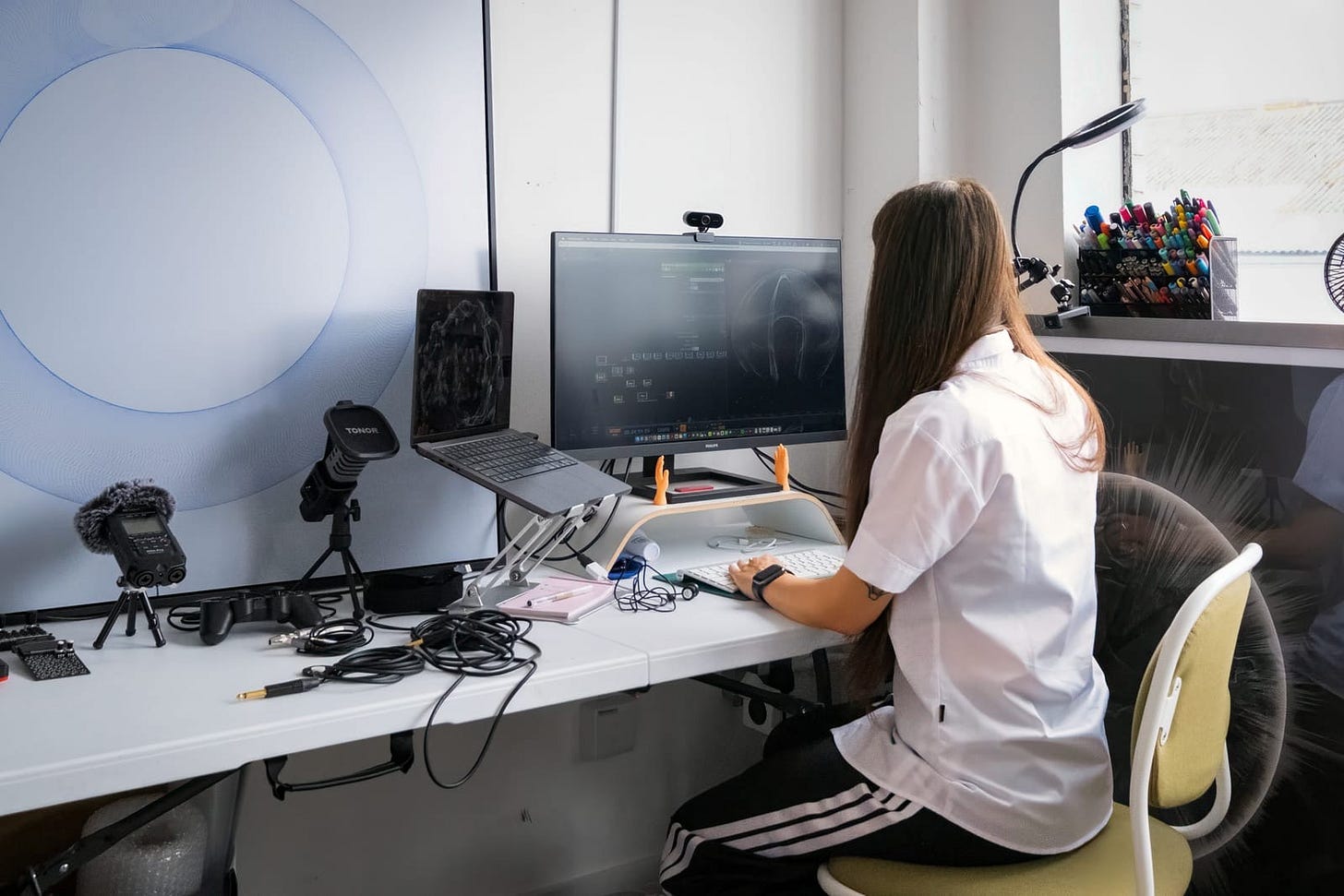TLDR:
For Tokyotheque, I turned the sound of three videos of Tokyo into a series of audiovisuals: The chime of a fumikiri; the cry of a karasu; the soft ratcheting of a freewheeling mamachari.
Tokyo Love Story, Electromagnetic Sounds of Tokyo – A visualisation of electromagnetic sounds [link]
Behind the scenes of Tokyo Love Story [link]
Tokyothèque Newsletter [link]
The more I explore music, the more I am fascinated by architecture. What if cities could be listened to rather than just seen? Not the loud, obvious sounds of traffic, no one likes that. But the hidden, muffled pulses that run beneath our feet while we walk, the vibrations of neon lights, the spark of vending machines, or the secret voice of architecture.
A few weeks ago, AJ from Tokyothèque came to visit my London studio. You may have seen our collab on Instagram. On my desk sat the same small recorder he had first noticed in my photographs of Tokyo, with my hand raised towards a lantern, a vending machine, or a glowing karaoke sign. Later, he wrote a beautiful piece about that encounter, reflecting on field recording as a practice of patience and attention.
“Where John Berger juxtaposed text and image, she translates phenomena that exist but are usually imperceptible—inaudible sonic patterns, ambient traces—into visual form, making hidden layers visible and opening them to interpretation.” — AJ, Tokyothèque
Reading AJ’s words felt like seeing my process refracted through someone else’s lens. I’ve always thought of my work as a documentation as well as a translation: taking invisible signals (the electromagnetic vibrations of Tokyo’s lights, the creaks of bamboo bending, the muffled underwater sound of a Mexican cenote) and giving them a visible, almost tactile form.
The reality is that my work begins with data but goes far beyond; sometimes exploring leads to uncharted territories, and even ends up in nothing (oops!). Data is the skeleton, but memory, perception, and emotion are the muscles and skin. Each piece of data I recorded is both an archive and a poem, a fragment of time that I stretch, reshape, and visualise until it reveals something hidden.
What AJ captured so well is that this act of “listening visually” isn’t about nostalgia alone; it’s about preservation, sensing the present with a different kind of awareness. Nothing we build is ever silent; everything vibrates, everything leaves a trace, and everything has data attached.
I’ll end this article with a sentence beautifully written by AJ, and a few links if you want to explore more about how I visualised the electromagnetic sounds of Tokyo. Of course, I’d love to hear our thoughts on this.
The decision to pause and raise a recorder instead of a camera feels, to me, like a distinct kind of sensitivity to the world. – AJ, Tokyothèque
For Tokyothèque, I turned the sound of three videos of Tokyo into a series of audio-reactive visuals: The chime of a fumikiri; the cry of a karasu; the soft ratcheting of a freewheeling mamachari.
Tokyo Love Story, Electromagnetic Sounds of Tokyo [link]
Behind the scenes of Tokyo Love Story [link]
Tokyothèque Newsletter [link]



